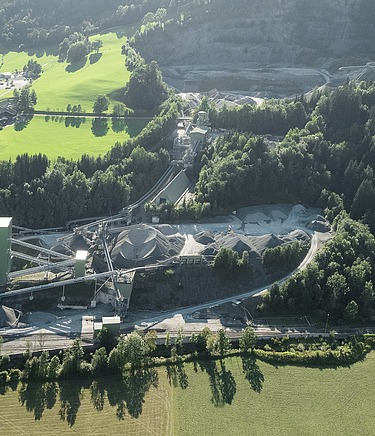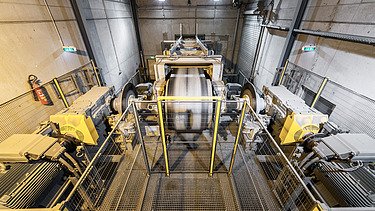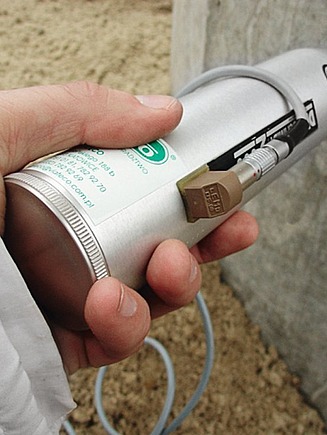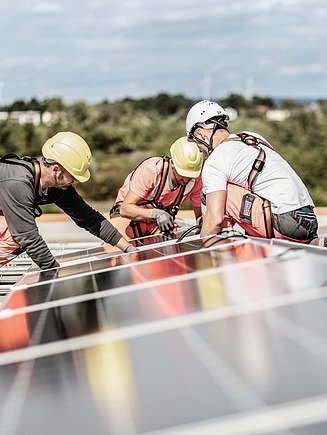Rolling stones gather no moss. But they can generate electricity.

At our quarry near Saalfelden, we produce electrical energy using the weight of the excavated material on the conveyor. This allows us to cover around 20 % of the electricity needs at the quarry ourselves while expanding the amount of energy generated in-house. An elegant and simple solution: we let the stones do the work for us.
How can excavated material be transported downhill from 1,500 m in a climate-friendly way?
In 2006, STRABAG took over a dolerite quarry near Saalfelden in Austria. The quarrying site is situated at an elevation of 1,500 metres, confronting the team with the question of how to efficiently transport the quarried material away from the site in a climate-friendly manner.

The solution:
an underground tunnel with a continuous conveyor belt system. That cuts down on the need for heavy goods vehicles and reduces the level of carbon emissions.
A highlight of the system is the predominantly energy-autonomous operation of the conveyor belt. The tunnel covers an elevation difference of 700 m over a distance of 3.2 km. That is quite steep. “The heavy excavated material on the conveyor forces a lot of weight downwards. This drives a generator that brakes the belt in order to produce electricity,” as technical group lead Thomas Rödhammer explains. In this way, the mountain itself provides the energy we need in the quarry. It doesn’t get any cleaner than that.

The conveyor belt can transport a maximum of 500 t per hour. This generates an electrical output of up to 550 kW – energy that we use directly on site to operate the processing plant. And if we still have electricity left over, we feed it into the public grid.
Thanks to several large investments in recent years, the Saalfelden quarry is now one of the most modern facilities in Austria – not only, but also, in terms of energy efficiency.
Factsheet:

Generating electricity from stones

